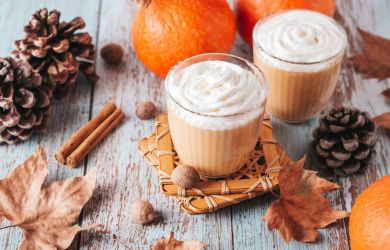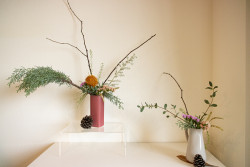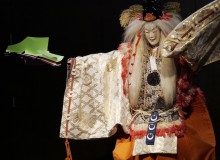
Originally published on metropolis.co.jp on December 2012

Trying to find somewhere open on and after January 1, when the New Year holidays have shut doors all around Japan, can be trying. Hence the tradition of osechi ryori, or seasonal food, dishes targeted at providing sustenance over the laidback days at home. Most can be prepared ahead of time, lasting for days when kept in a cool environment.
Like everything else in Japan, osechi ryori can be bought packaged exquisitely in deluxe boxes called jubako. At department stores such as Takashimaya, late October sees the spectacle of the first day of pre-order, when lined-up customers stampede inside to snap up the coveted limited-edition boxes. These tend to include offerings from Michelin-grade and other award-winning chefs, top-class hotels, and famous ryotei (luxurious Japanese restaurants)—and can fetch up to ¥200,000 per box. For those without a six-figure salary however, local supermarkets and conbini also sell—more affordable—box sets. Some mix in Chinese and Western elements, while others highlight regional cuisine.
Every year has its trends, and this one is no different. Look out for a proliferation of low-calorie options, and “yawaraka osechi”— soft foods for elderly customers.
COMMON COMPONENTS
- Tazukuri—Candied dried sardines, formerly used as fertilizer in rice paddies, hence their other name gomame (“50,000 grains of rice”)
- Kazunoko—Herring roe simmered in soy and dashi broth, symbolizing fertility
- Kuromame—Simmered sweet black beans, a pun on the word “mame” for diligence and hard work in the upcoming year
- Kohaku namasu—Pickled, red Kyoto carrots and strips of white daikon make up the celebratory colors of red and white
- Kamaboko—Steamed fish cakes, also in the nationalistic colors
- Kuri kinton—Mashed sweet potato with sweet chestnut, the kanji is a play on prosperity
- Yude ebi—Boiled shrimp, whose bent backs refer to having a long life (check out some elderly on the bus for a visual explanation)
- Kobumaki—Kelp, often wrapped around herring or salmon. A play on the word “yorokobu,” for happiness in the home
- Tai—Sea bream; a play on the congratulatory greeting “omedetai”
- Sato imo—Taro root, symbolizing a great number of descendents, from the way the little potato-like vegetables proliferate
- Renkon—Lotus root, the holes of which allow us to see clearly into our future
- Daidai—Bitter orange, whose name is a homonym for future generations
Look out for spice packets for steeping in sake to make o-toso. The spice pack looks like a tea bag and is filled with herbs including cinnamon and dried sansho berries, and produces a delicious drink for New Year’s Day, thought to stave off illness during the winter season.







